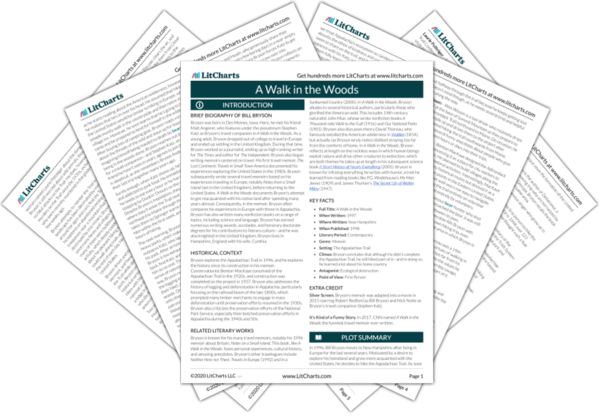Bryson enjoys his visit to Mount Greylock immensely, partly because he can connect it with little snippets of cultural history. Once again, Bryson suggests that people might enjoy natural environments more if they didn’t tend to think of nature as this remote curiosity that has nothing to do with human society. He’s relieved that the plans to build a ski resort fell through, as this part of the Trail could have easily become overrun by ugly commercia activity. As usual, Bryson thinks that this would have made exploring this part of the Trail far less pleasant.
